There is a wide range of studies on this topic, often contentious in various ways. Here I shall adopt a simple factual approach, outlining how the study of ancient Indian history and archaeology has developed in different stages from the mid-18th century to the present.
Ancient Indian History
The study of ancient India has two major components: the documentary evidence in the form of texts, inscriptions, inscribed coins, etc. and the study of prehistoric, proto-historic and historical archaeology. Ancient India was not discovered in the sense in which Mesopotamia was discovered. This is an important point to remember. We had a continuous and living academic tradition based on the study of Sanskrit and other related ancient texts. The Europeans began translating some of these texts in the 18th century with the help of traditional scholars. There were also many references to India in various Greek and Roman texts. While reconstructing the ancient geography and ancient political history of India these Graeco-Roman references were of immense help. For instance, the Sandracottas of the Greek was Chandragupta Maurya and Palibothra was Pataliputra, the Mauryan capital. The English publications dealing specifically with Indian history were limited in number in the first half of the 19th century, the section of ancient history being only a segment of these general surveys.
The first of these broad historical surveys was James Mill’s six-volume The History of British India, the first volume of which was published in 1817. It was exclusively a history of British India till Mill’s own time. Chapter I of Book II deals with ‘chronology and ancient history of the Hindus’ and claims that no series of real events can be traced among Hindu legends. William Marsden’s essay, ‘on the chronology of the Hindoos’, was published in 1790 in Philosophical Transactions of the Royal Society and was followed by Alexander Hamilton’s monograph ‘A Key to the Chronology of the Hindus’ in 1820. James Mill’s antipathy to the Hindus and the civilization they built up in ancient India is well-known, but what is striking about his detailed item-by-item attempted rebuttal of everything Hindu including the claim of its contribution to arithmetic, trigonometry and algebra, is the air of contempt it breathes. However, H.H. Wilson, the first Boden professor of Sanskrit in Oxford and the first English translator of the Rigveda, stands out among his contemporaries for pointedly criticising Mill’s opinion of the Hindus, especially of the ancient Hindus.
Mill’s contempt for the Hindus had an evangelical or Christian missionary factor in the background. Early in the 19th century there were Englishmen in India, who were sympathetic to Hinduism. In 1808 Major General Charles Stuart published Vindication of the Hindoos from the Aspersions of the Reverend Claudius Buchanan MA to support the Hindus and Hindu civilization against the onslaught of the Christian missionaries and wrote that Hinduism ‘little needs the ameliorating hand of Christian dispensations’. However, by 1813, a change in the charter of the East India Company made possible a large-scale presence of missionaries in India, soon changing for the worse the British perceptions of the Hindus.
The first landmark publication on the history of India (ancient India included) was by Mountstuart Elphinstone (1st volume in 1841 and the 2nd in 1843), but there were other authors before and around him: Hugh Murray (1832), G R Gleig (1830-35), John Marshman (1859/1863), Edward Thornton (1841), Robert Sewell, and W Hamilton (1820), among others. None of them, except Marshman, was influenced in their attitude to India by the Christian missionaries, and all of them had respect for the Indian civilization for its antiquity and originality. I find Elphinstone’s book to be of epic proportion. The volume containing the section on ‘ancient India’ was divided into four ‘Books’, preceded by an introduction which offered a general description of the country, beginning with its boundaries and extent. India during Elphinstone’s time comprised 14 crores of people and there was wild life ‘in the utmost abundance’.
Although the idea of Aryan migration to India was by this time well understood, Elphinstone thought it improbable that the Hindus were at any point settled anywhere else except India, thus questioning any link between the Aryan postulate and the origin of Hinduism. He further believed that the lower castes found their caste status not an impediment to progress in their life, the cases of both barbers and goatherds being known in the employ of the princely families of his time. The chronology of ancient Indian texts was still on shaky ground, the date of Manu’s dharmasastra being put by him in the 9th century BC.
In retrospect, Elphinstone’s history of Hindu India or ancient India continues and exemplifies the tradition of pursuing a great mix of geography with history. He sets the vast geographical and social panorama of India that he saw himself with as much objectivity as he was capable of. This itself was a magnificent feat, and his book is worth turning to times and again mainly for this. The India that he saw belonged to the first half of the 19th century with a population of only 14 crores---- a large, unspoiled, almost pristine India. It is not that he was not critical of India and the Indians he encountered, but basically it was a very tolerant and humane look with no place for racial arrogance.
The next important British historian of ancient India was Vincent Arthur Smith whose Early History of India ( 1st edition in 1904 and the 4th edition in 1924) was on ancient India, and his The Oxford History of India (1919) continued the history to the modern period. Mention should be made of his excellent biography of Asoka (1901) and various sourcebooks such as coin catalogues of museums and history of Indian art, effectively contributing to the studies of archaeology and numismatics. Smith’s history is hardly as warm and evocative as Elphinstone’s, but it would be difficult to detect any willful distortion of data in Smith’s writings and in the case of historical methodology, he always tried to keep the legends separate from authentic history. Nor did he display in the vast corpus of his writings any trace of outright contempt for, and sense of superiority in relation to Indians. He also accepted the concept of ‘unity in diversity’ as propounded by Radha Kumud Mukherji, a contemporary Indian historian.
This concept was denied by E J Rapson, the editor of the Cambridge History of Ancient India. He also wrote a small book, Ancient India: from the Earliest Times to the First Century AD. To Rapson, “India is and, in historical times, always has been composed of a number of large countries and a multitude of smaller communities, each having its own complicated racial history and each pursuing its own particular lines of development independently of its neighbours.” This point of view continues among the Western Indologists of today and their followers in India and elsewhere.
To come to the Indian historians of ancient India, one detects a tentative interest as early as 1834 in the attempt of Ram Raz (1834) to understand the principles of ancient Indian architecture on the basis of Silpasastra texts, but among the first Indians to make a solid impact on the study of ancient Indian history and archaeology are scholars like Rajendralal Mitra and Ramkrishna Gopal Bhandarkar. Mitra not merely edited ancient texts on behalf of the Asiatic Society of Bengal but also published a two-volume study of ancient Odishan architecture. He also initiated a wide-ranging study on the material life of ancient India, both on the basis of archaeological remains and texts. R.G. Bhandarkar researched the early history of the Deccan and explored different aspects of Saivism and Vaisnavism. A later contemporary of Mitra was Hara Prasad Sastri who is famous for his discovery of the earliest roots of the Bengali literature in the Buddhist Charyapada texts found in the court of Nepal, but in addition to his manuscript discoveries and studies, he also wrote a small volume on the history of India. Kasi Prasad Jayasawal, a barrister of the Patna High Court, clearly showed with a lot of documentation that there was a system of parliamentary democracy in Buddhist India with its republican tradition. Ramesh Chandra Majumdar wrote on many aspects of corporate life in ancient India and also on India’s interactions with Southeast Asia. On the Indian side he was truly a pioneer scholar in the field of India’s relationship with the ancient world of Southeast Asia. Radha Kumud Mukherji drew attention to the details of the glorious tradition of ship-building in ancient India and also discussed the issue of the fundamental unity of the country. Rakhal Das Bandopadhyay, more famous as the first excavator of Mohenjodaro, wrote on the history of the imperial Guptas, besides editing and publishing a large number of inscriptions and coins. Upendra Nath Ghoshal wrote the first masterly analysis of the revenue system of ancient India. D R Bhandarkar’s researches threw a lot of light on the ancient history of Rajasthan. K A N Sastri emphasized the glory of the Cholas and synthesized the ancient political history of the south. To T V Mahalingam we are indebted for various socio-economic studies in south Indian history including the Vijayanagara period. Rama Shankar Tripathi is famous for his study of the history of Kanauj. A.S. Altekar and many of his contemporaries specialized in the political and other aspects of ancient India. In more recent period we have had historians like Dinesh Chandra Sircar and V V Mirashi whose contributions to ancient Indian inscriptions and coins are outstanding. Prabodh Chandra Bagchi offered an excellent synthesis of India’s interactions with China.
The list of such Indian historians of ancient India can be extended manifold. They built up the basic scaffolding of the ancient historical structure of the country region by region and period by period, invariably on the basis of primary sources which they understood and evaluated well. Most of them had also a pan-Indian outlook and they never highlighted the achievement of one part of the country at the expense of another. They were true to their calling as historians; they never tried to hypothesize beyond what was warranted by their sources. Finally, their personal political beliefs were not allowed to interfere with their historical judgment. The same is true of the professional historical associations like History Congress; such organizations remained essentially non-political. This phase of Indian historiography lasted long, most visibly from the later part of the 19th century to about 1950. The scholarship so far was epitomized in a series of volumes of which R.C. Majumdar was the editor. From this point of view the series published by Bharatiya Vidya Bhavan under the patronage of K M Munshi and named History and Culture of the Indian People was a great success.
Things began to change from about 1950 onward and became consolidated after the Indian Council of Historical Research was established under the government aegis in 1971-72. The following features may be noted regarding the changes during the period 1950-1971 and later. In 1958 D D Kosambi, a mathematics professor with Communist beliefs and ability to handle many primary sources related to ancient India , wrote a book , An Introduction to the Study of Indian History. The book contained some insightful comments on the historical situations in the Deccan but apart from them, it also argued the necessity of augmenting our historical sources by fieldwork and remembering the ‘living tradition’ of the past in the country.
In the succeeding period two more major figures turned up in the field of ancient India: Ram Sharan Sharma and Romila Thapar. The latter was generally influenced by the social science literature and her post-Ph. D publications included considerable anthropological/sociological references. She failed to ask a simple question: do we have enough and well-defined sources to make our social inferences logical and acceptable regarding various ancient Indian contexts? Historians, whatever their personal beliefs, should have some interest in coming as close as possible to the historical truth, and their basic analysis should be as objective and data-based as possible. Citing abstruse philosophical or sociological dictums without even trying to strengthen them with an undeniable core of solid evidence can never be the business of honest historians. Sharma’s case deserves a more serious consideration.
Sharma is known principally for his work on feudalism, which was a deliberate attempt to link ancient Indian development to the Marxist scheme of slavery being succeeded by feudalism. Devaraj Chanana showed that there cannot be any postulate of slave society in India. However, Sharma on the basis of land-grant inscriptions between roughly 6th and 13th centuries AD inferred that the kings were parting with their absolute control of the realm and making the Brahmins members of a feudal order. He did not bother to quantify these land-grant inscriptions, nor did he try to ascertain that such grants were issued much earlier and later than the chronological phase suggested by him. In Rajasthan such grants date even from the 17th/18th century and in the Deccan they also occur as early as the Satavahana period. Further, Sharma failed to take note of the fact that making donations to Brahmins on auspicious days was an integral part of Hindu ritual behavior and that by making these donatory land grants to the Brahmins, the kings were in fact following a deep-rooted Hindu religious custom. Thirdly, scholars like K P Jayaswal point out that legal ownership of the land was not vested in the king and thus he was not legally entitled to make an absolute gift of that. Further, Sharma was apparently unaware that as early as the 1830s James Todd in his study of Rajasthan found traces of European feudalism in the contracts between the king and his feudatories, with obligations of military duties imposed on the latter. There was no such imposition on the Brahmins who were given land. Sharma also tried to embellish his feudal idea by claiming that there was decay in urban centers and monetary economy during the so-called feudal period. The claim is not borne out by the relevant data. Further, as Sima Yadav has shown, the number of land grants was not of significant proportion in view of the total number of inscriptions available for the period.
The premise of a feudal order offered by Sharma generated a few more concepts such as ‘early mediaeval’, ‘state formation’, ‘legitimisation’ of various dynasties, etc. Sharma tried to abolish the distinction between the ancient Hindu phase and the Muslim phase of history by bracketing the entire phase between the post-Gupta India and the Muslim coming as ‘early medieval’. This was an attempt to put the Muslim phase as a logical continuation of the Hindu ‘early mediaeval’ phase. ‘State formation’ has been a continuous process in India till the Mughal period beginning in the very beginning of early historic period. ‘Legitimisation’ is another term which one hears frequently in this context. This ignores the fact the kings offering worship to a particular deity of their region did not ‘legitimize’ their royal stature in the eyes of their subjects.
It is not merely the academic opinions that we have cited above are the only aspects of the phase of historical research which began around 1950 and continued till the recent period. The basic structure of historical studies in the country got politicized during this phase. This is very unfortunate because the personal political opinion of a historian should be kept separate from the research work he does. In any case, the politicization of historical studies in India happened in the following way. The leftists got control of the Indian Council of Historical Research (ICHR) which was the main funding agency of historical studies, with R S Sharma being its chairman. Its patronage network remained essentially limited to the leftists and thus whatever scholarly opinion was aired by the leftist historians was accepted without demur by the Indian historical community. This inevitably led to a situation when the personal political belief of a historian became an important yardstick of judging his professional competence. These were very unfortunate developments and one would claim that the phase of ancient historical studies which began around 1950 and continued till recently is about the worst phase in the history of this study in India.
We have attempted here only a bare outline of how the study of ancient Indian history has progressed so far. A few other aspects also deserve mention. The Indology or the ancient Indian studies that we encounter in their diverse forms in India is essentially based currently on Indian, British and American studies. However, there are scholars from other countries such Germany, Italy and Russia. So, one can name Indology according to the country where it is pursued. In this sense, there is ‘German Indology, Russian Indology, and so on. Research has begun to appear on the history of these different schools of Indology. In recent years, the history of German Indology has come in for special attention. The Portuguese contact with India long preceded other European contacts and scholars have begun to focus on how the Portuguese viewed history, ethnography, etc. of this land. Apart from such regional developments, there were also some general features of the Western approach to the Oriental studies, of which ancient Indian studies were a part. This is generally described as Orientalism which has given name to a famous study by Edward Said, a Palestinian literary scholar based in USA. In the Indian context this has been studied under the rubric Colonial Indology. It has been argued that the most fundamental trait of Colonial Indology is racism which has found expression in academic literature in relation to India in various ways. This leads us to the question of the socio-politics of the past. To highlight its importance we should draw attention to what Ram Manohar Lohia, a famous Indian parliamentarian, said in Parliament in 1966. Lohia was speaking in the context of the UNESCO publication on the history of civilization. Lohia proclaimed that Indian children were raised in the belief that India in the course of her history never displayed any originality. She owed the basic traits of her civilization to influences from other parts of the world. It is for this reason that Indian history needed rewriting. This view was accepted by M C Chagla who was then the education minister of the country.
During the colonial period the opinion of the Western scholars received primary attention. Scholarship is never outside the arena of conflict for power, in this case intellectual power. Students of Indian history, even of ancient history, should be aware of it. In modern India there has been an increasing dissatisfaction with how India’s ancient history was formulated both in the colonial period and in the period which followed. For instance, it is doubtlessly true that all ethnic and racial groupings like Aryans, Dravidians, etc. are not based on scientific reasoning and should be discarded forthwith.
It is also important to emphasize that the study of ancient India should not get involved in political controversies of the recent period. Historians should following their calling, i.e. to be true to their data and write history on that basis.
Archaeology
By the 18th century there was a substantial body of writings on the monuments of mainly west India (cf. Buddhist rock-cut caves like Elephanta) in the literature left behind by the European travellers in Mughal India. They made extensive tours in the country and whenever they came across major monuments on their routes, they decided to take note of them. There was a more focussed interest on Indian monuments in the first half of the 18th century, as one gathers from the French priest Anquetil du Perron and the Danish traveller Karsten Niebuhr. To some extent this focussed interest was related to the contemporary European interest to look beyond the Bible to seek the origins of civilization. This was noted most visibly among the French ‘Encyclopaedists’ like Voltaire who at one point even wrote that ‘everything’ had come down from ‘the banks of the Ganges’.
The establishment of the Asiatic Society in Calcutta due to the initiative of William Jones in 1784 led to a more organized interest in the past of India. In its literary mouthpiece Asiatic Researches there was a series of deliberations on various aspects of Indian literature, culture and even monuments, with William Jones as the President of the Asiatic Society playing a leading role. What is clear from the different writings of Jones is that the most important problem for him and his contemporaries in this pre-Darwinian period was to relate India and Indian civilization to the framework of human civilization as noted in the Bible. According to the Biblical framework, all humans were the descendants of Noah and thus related. The civilizations of India, Peru, Japan and whatever part of the world one can think of, had to be mutually related. The similarities which Jones offered for Sanskrit, Latin and Greek, Peruvian, Japanese and many other languages were based on this pre-Biblical theoretical assumption.
Till about 1830 the interest of the Asiatic Society was mainly literary. When James Prinsep became the Secretary of the Society in about this period, attention slowly began to drift towards archaeology. Prinsep played an unforgettably important role in the development of ancient historical and archaeological studies in India. First, he deciphered the Asokan Brahmi and Kharosthi around 1837 and this by itself opened vast doors for research on ancient India. Secondly, he insisted that the learned world demanded facts regarding India, and he wished that people should contribute to factual knowledge in this regard by publishing it in the Journal of the Asiatic Society (of Bengal), a journal which he himself established. Among the sites which came into limelight during this period were mostly the Buddhist stupa sites in various parts but mostly in the northwest where army officers, including some in Ranjit Singh’s army, played a positive role.
An important follower of Prinsep who was the Essay Master of Calcutta Mint, was Alexander Cunningham who was a Major General and the chief engineer of the United Provinces. It is obvious that the major archaeological sites of the country had to be identified and mapped first before one could go further ahead. To some extent this was attempted by geographers like James Rennell but Cunningham took this up as his life’s academic work. To achieve his aim, he took up the itinerary of the 7th century AD Chinese pilgrim in India Xuang Xang and followed it, identifying the old sites mentioned by him, as he went along. First, he began to do this type of work in his personal capacity but he also kept writing to the government for a government-sponsored archaeological survey of India. The government eventually accepted his idea, and Cunningham officially began his survey in 1861 which now is the official year of the birth of the modern Archaeological Survey of India. Cunningham’s method was to survey the major mounds of the different sections of the country in one part of the year and write reports on them in another part. A series of ‘Cunningham reports’ thus took shape. His principal collaborators were J D Beglar and A C L Carlleyle, both employed by the government. These reports by Cunningham and his collaborators form in a sense the base-line of the historical archaeology of the country.
The man who became important as the first archaeologist of the country after Cunningham was James Burgess who came towards the end of the 19th century. Burgess was mainly interested in the history of ancient Indian architecture and has left behind a large number of monographs on the monuments primarily of western India. It was also roughly during this period that a separate section of epigraphical studies came to the fore, soon resulting in a large number of ancient inscriptions being edited and published.
There was a short period of time when there was no central figure but there were some regional surveyors who produced reports on their own without a central leadership. This decentralized phase of Indian archaeology ended when Lord Curzon came as the Viceroy. He had his own idea of how the archaeological wealth of the country should be explored, excavated and preserved, and John Marshall came in 1902 in response to Viceroy’s interest in the matter. The modern Archaeological Survey of India is essentially the creation of John Marshall. Many major sites were excavated by his officers under his leadership, leading to a great burst of data on the actual remains of the past. Indian officers of the Survey fully played their role and the names of Hirananda Sastri, Dayaram Sahni, Ramaprasad Chanda, M S Vats, R D Banerjee, D R Bhandarkar and others became masters of the discipline in their own right. There was an organized scheme and a well-pursued policy of conservation of ancient monuments in all parts of the country, leading to an infinitely better awareness of their leading ancient structures. The emphasis of Marshall’s policy of conservation was to preserve what is left and not to ‘renew’ it by modern reconstruction. His conservation policy served the country well till recently, when the pressure of the modern ‘conservation architects’ has introduced a programme of reconstruction of monuments. The missing architectural parts are supposed to be rebuilt now with the help of traditional craftsmen. To many of us professional archaeologists this is barbarism of the worst kind. Nobody has business to ‘renew’ an ancient monument. Finally, it was under Marshall’s leadership that the Indus civilization was discovered, putting India on the level of Egypt and Mesopotamia in the scheme of human development. The first excavator of Mohenjodaro was R D Banerji (1922) and the first excavator of Harappa was M S Vats (1921). However, it was under Marshall’s leadership that the Archaeological Survey of India laid claim to the discovery of a previously unknown Bronze Age civilization. On the whole, Marshall’s tenure as the Director General of the Archaeological Survey of India (1902 – 29) shaped the modern Indians’ perception of their ancient past.
The persons who headed the Archaeological Survey of India after Marshall were J F Blackiston and K N Dikshit; for all sorts of reasons but mainly due to the economic stringency of the period the Survey did not then give the impression of being in good health. The government set up an one-man committee under Leonard Woolley, the excavator of the famous Mesopotamian site of Ur. Basically he pointed out the necessity of rejuvenating excavation programmes and recommended the name of Mortimer Wheeler as one who could perform the task of this rejuvenation. Wheeler held the office in 1944-48 and primarily did two things. He initiated a series of excavations at a number of sites – Harappa, Taxila, Arikamedu and Brahmagiri --- demonstrating how stratigraphical approach could lead to a much sharper assessment of what had happened at the site in the past and how archaeology could be used to throw light on solving historical issues at the site. Further, realizing the importance of training on the stratigraphical way of digging, he organized a training camp at his excavation site of Taxila, bringing not merely the Survey personnel but also students of many Indian universities. By publishing the detailed reports on his excavations in the newly organized Survey journal Ancient India, he set a model of adequately publishing the results of excavations. Ancient India long served as the preeminent forum of Indian archaeological publications. In various ways, Wheeler’s Director General –ship was a major point of departure in the history of Indian archaeology. He also gave adequate attention to prehistoric studies, appointing a pre-historian – V D Krishnaswami -- in the Survey specifically for the purpose.
The archaeologists who succeeded Wheeler at the helm of archaeological affairs of the country as the Director Generals of the Archaeological Survey of India were, successively, N P Chakravarti, M S Vats, A. Ghosh, B B Lal, B K Thapar, M N Deshpande, Debala Mitra, M S N Rao, J P Joshi and M C Joshi. After M C Joshi the Survey began to go very frequently under the direction of senior administrators of the central government. In the post –MC Joshi period only one professional archaeologist with a high level of competence and archaeological scholarship --- Rakesh Tewari – functioned as the Director General for a term of 3 or 4 years. Another non-administrator who served in that capacity for a single term before Tewari was G Sengupta.
The Comptroller and Auditor General of India submitted in 2013 a detailed ‘performance audit’ of the Survey. What transpired was a wholesale indictment of how the Survey failed to fulfill its brief – what was formally expected of it to do. The report was submitted to Parliament and is a public document. The fact that this CAG report which is the first one of its kind did not lead to any detailed discussion either inside or outside the government may be considered a reflection on how things currently stand in archaeology in India. This criticism notwithstanding, there has been a great expansion of our knowledge of the archaeological past of the country since Independence. Some of it has been seriously offset by the lack of timely publications, for which the concerned archaeologists are responsible. Report-writing has regrettably been the business of retired archaeologists employed by the Department on daily wage.
Archaeological research has also expanded in the universities, although the standard of this development varies widely. Some foreign university archaeologists have collaborated with some Indian university archaeologists. The latter group has begun to fulfill the role which the native merchants used to fulfill in the early days of the East India Company –basically facilitating the work of the foreigners in exchange for incentives like ‘foreign visits’. Considering that the Archaeological Survey of India is a government organization which has its own code of interacting with foreigners whereas the Indian universities and other institutions do not have any such code, the government of India may seriously consider restricting the foreign participation in Indian archaeology only to its own Archaeological Survey of India where its officers cannot play the role of underlings in relation to the foreign participants. Secondly, this foreign collaboration may take place between the Archaeological Survey and the various ‘archaeology units’ of foreign universities and not with individual foreign teachers. Such archaeology units are functioning grassroots level places where emphasis is placed on carrying out the basic archaeological tasks and not on sticking to the ideological and theoretical preferences of individual departmental teachers.
There is an invariable necessity of arranging a great deal of scientific input in modern archaeological research. In India a laboratory modelled on a CSIR laboratory can play an important role in providing the benefit of various scientific analyses to archaeologists. What is currently alarming is that there is a tendency on the part of archaeologists to assume the role of ‘scientists’ themselves. The point is that in India the archaeologists possess almost invariably academic background of history and/or Sanskrit. Scientific ventures on the part of such people can lead only to academic disasters. For instance, one Indian institution boasts of having a section on ‘archaeological science’. None of its members have any academic background of hard sciences; in fact, one discovers that an MA in History is engaged in studying the lipids remnant in ancient pottery in that division of ‘archaeological science’ somewhere in Gujarat. There may be more cases like that.
In this brief essay I have only outlined, with emphasis on clarity, how the study of ancient Indian history and archaeology has progressed in India. I have also hinted at some of the limitations this development suffers from.
Note : The following books by me may be useful for this topic : Nationalism in the Study of Ancient Indian History ( Delhi 2021); Towards a Nationalist Narrative of India’s Ancient Past (Delhi 2022); Archaeology in the Third World : a History of Indian Archaeology since 1947 ( Delhi 2003) and A History of Indian Archaeology from the Beginning to 1947 (Delhi 1988). These books will lead to further references.
(The paper is the author’s individual scholastic articulation. The author certifies that the article/paper is original in content, unpublished and it has not been submitted for publication/web upload elsewhere, and that the facts and figures quoted are duly referenced, as needed, and are believed to be correct). (The paper does not necessarily represent the organisational stance... More >>
Image Source: https://img.jagranjosh.com/imported/images/E/Articles/Sources-of-Ancient-Indian-History.jpg

.jpg)
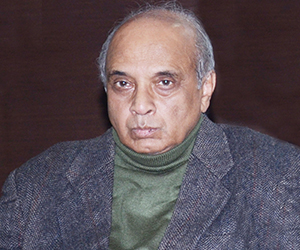

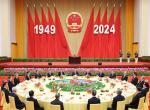
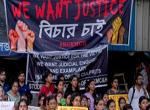


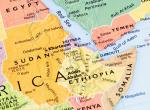

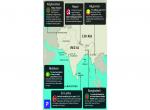
Post new comment